Key Takeaways
-
Spider Mites Overview: Tiny arachnids that feed on plant sap, leading to discoloration, webbing, and reduced plant health.
-
Infestation Signs: Watch for speckled, yellow, or bronze leaves, fine webs, and wilting plants.
-
Control Methods: Use water sprays, beneficial insects, insecticidal soap, neem oil, or miticides for effective treatment.
-
Prevention Tips: Regularly inspect plants, keep humidity high, isolate new additions, and clear plant debris.
-
Year-Round Threat: Spider mites can be active any time, especially in dry conditions—early detection ensures better control.
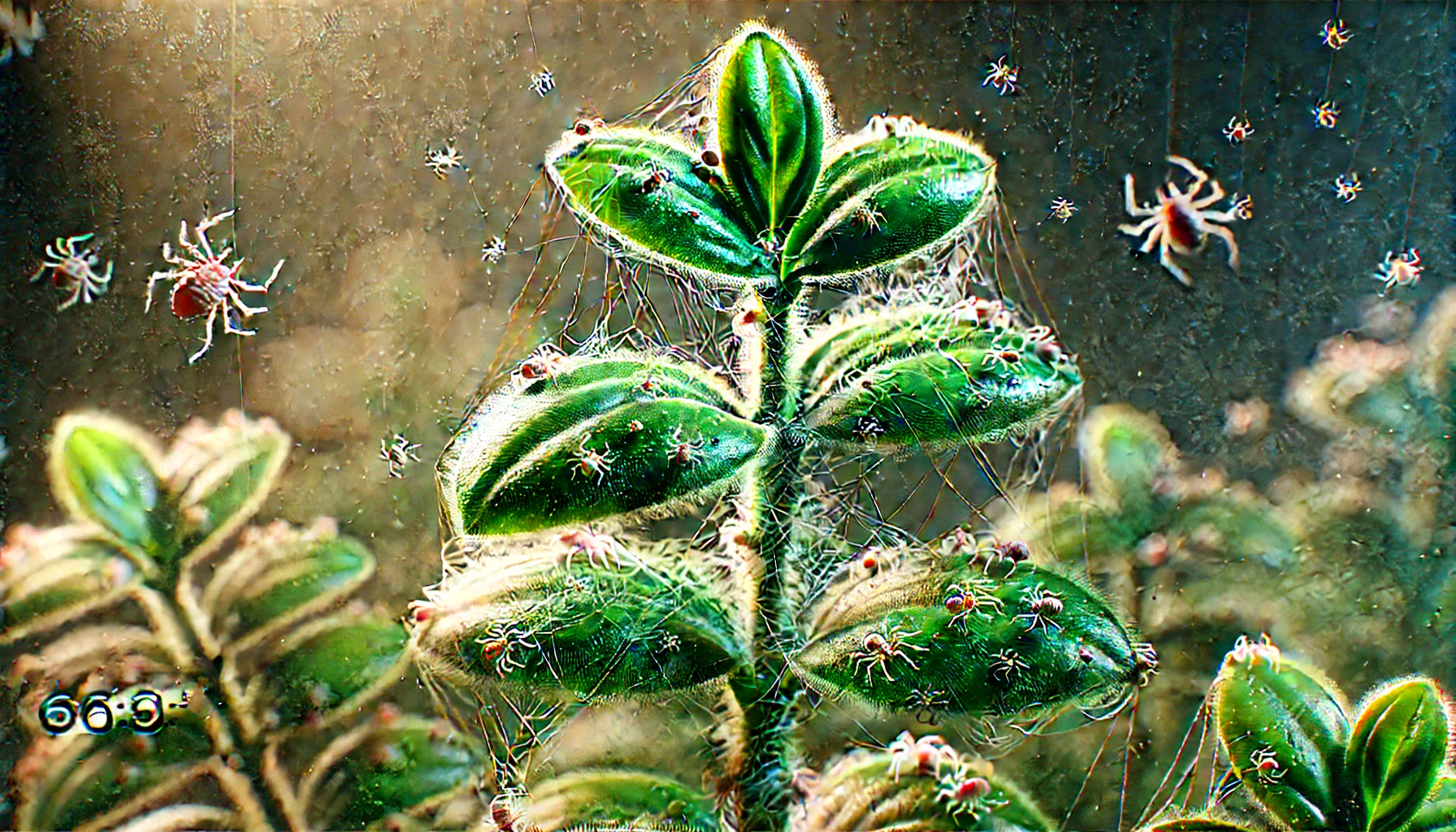 Spider mites are some of the most destructive plant pests, often going unnoticed until significant damage has already occurred. These tiny arachnids feed on plant sap, weakening leaves and eventually stunting plant growth. Whether you’re tending to houseplants, a vegetable garden, or outdoor ornamentals, knowing how to identify, treat, and prevent spider mite infestations can help keep your plants healthy.
In this article, we will take a look a spider mites, their identification guide and how to manage their infestation.
Spider mites can spread quickly, making early detection crucial. If you suspect an infestation, don’t wait—schedule your Free Pest Inspection Visit today to protect your plants and garden.
Spider mites are some of the most destructive plant pests, often going unnoticed until significant damage has already occurred. These tiny arachnids feed on plant sap, weakening leaves and eventually stunting plant growth. Whether you’re tending to houseplants, a vegetable garden, or outdoor ornamentals, knowing how to identify, treat, and prevent spider mite infestations can help keep your plants healthy.
In this article, we will take a look a spider mites, their identification guide and how to manage their infestation.
Spider mites can spread quickly, making early detection crucial. If you suspect an infestation, don’t wait—schedule your Free Pest Inspection Visit today to protect your plants and garden.
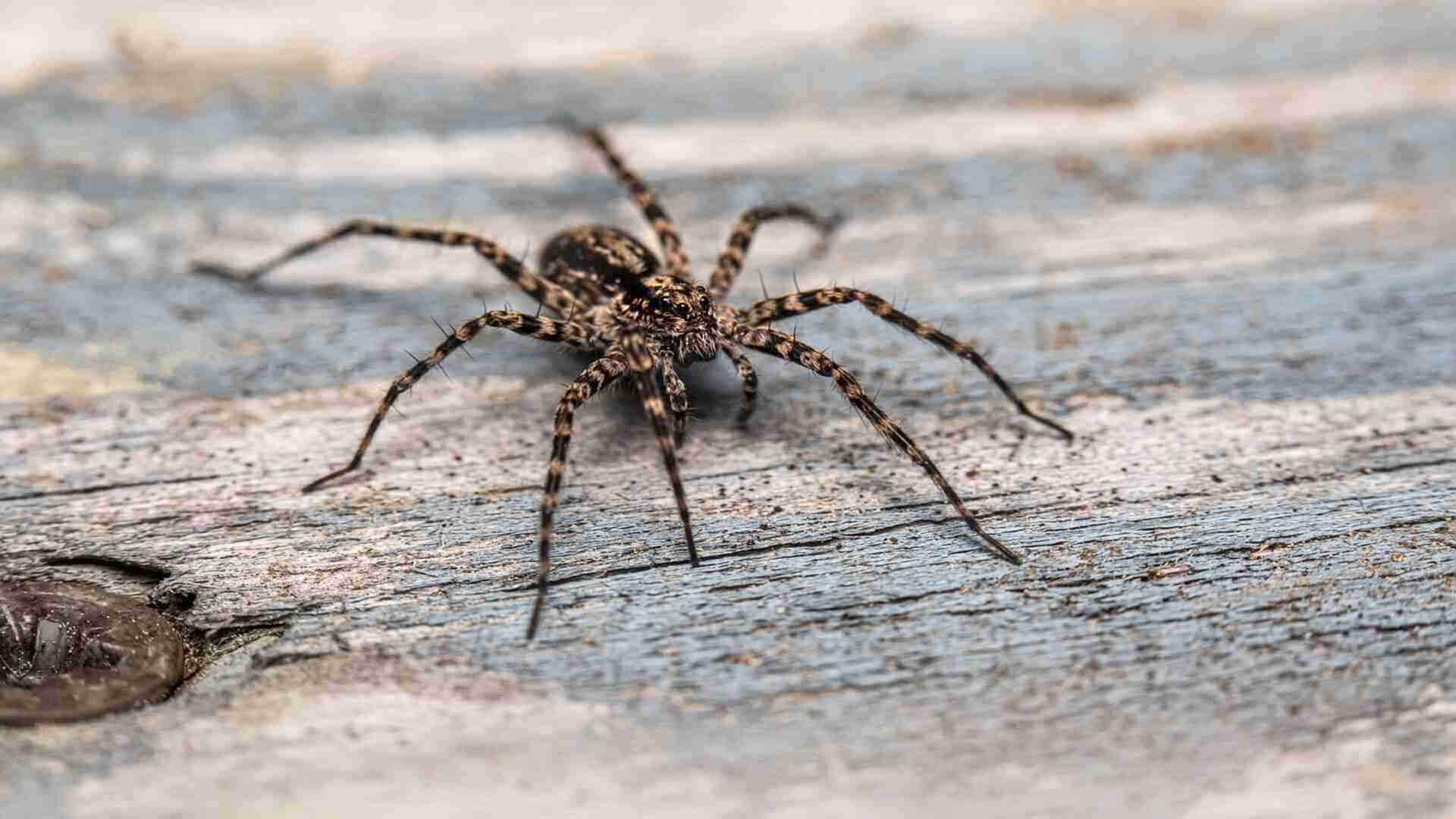

Not getting a solution?
Get your free pest control estimate today!What are Spider Mites?
Spider mites, part of the Tetranychidae family, are microscopic arachnids closely related to spiders and ticks. Despite their small size, they have a devastating impact on plants due to their rapid reproduction and feeding habits.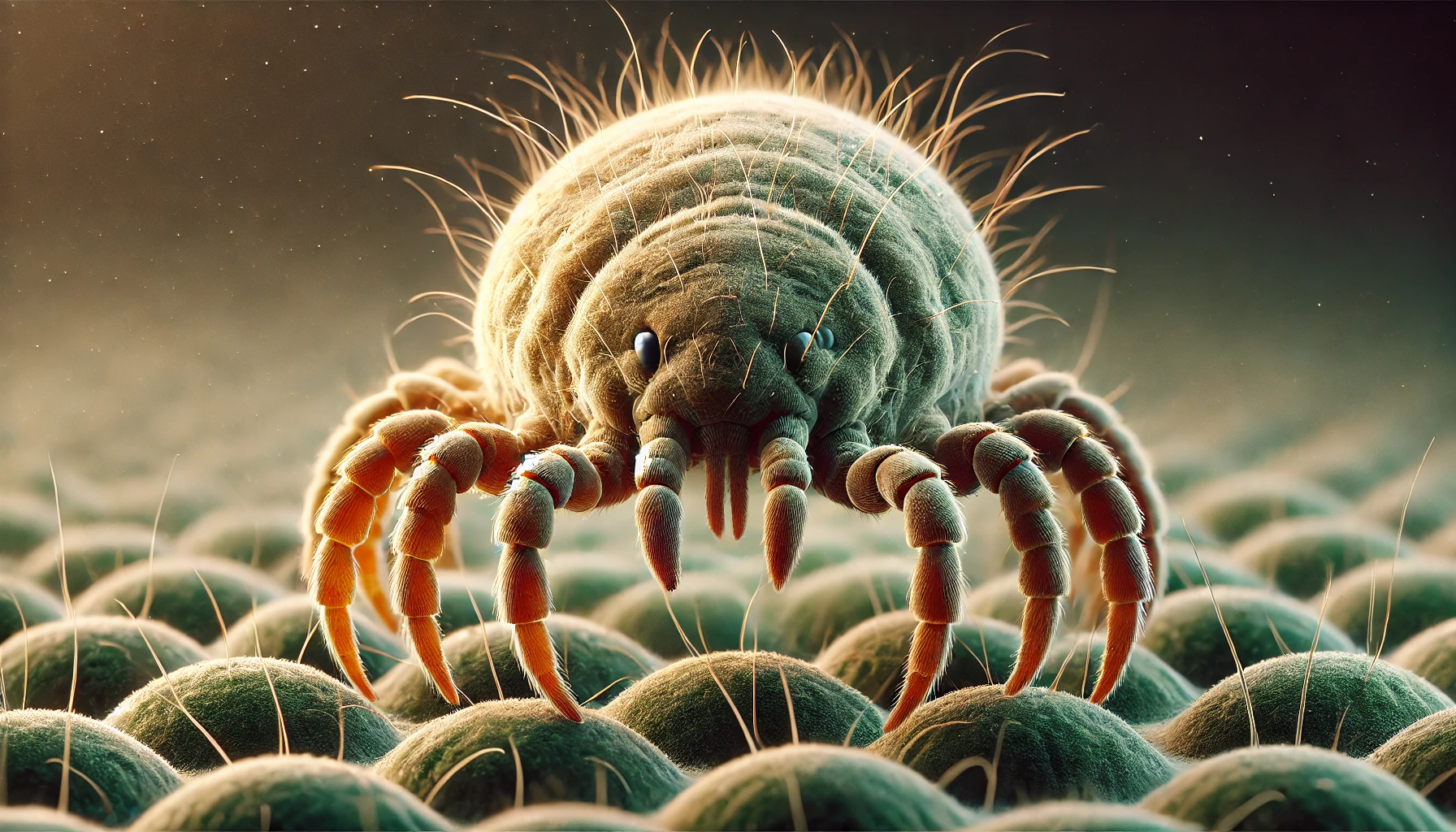
Physical Characteristics of Spider Mites
-
Size: Adult spider mites measure around 1/50th of an inch in length, making them extremely small.
-
Color: They can vary in color, typically ranging from greenish-yellow to red or orange depending on the species and environmental conditions.
-
Webbing: One of the key indicators of a spider mite infestation is the fine, web-like structures they leave behind, particularly in large populations. This webbing can be seen on the undersides of leaves and stems.
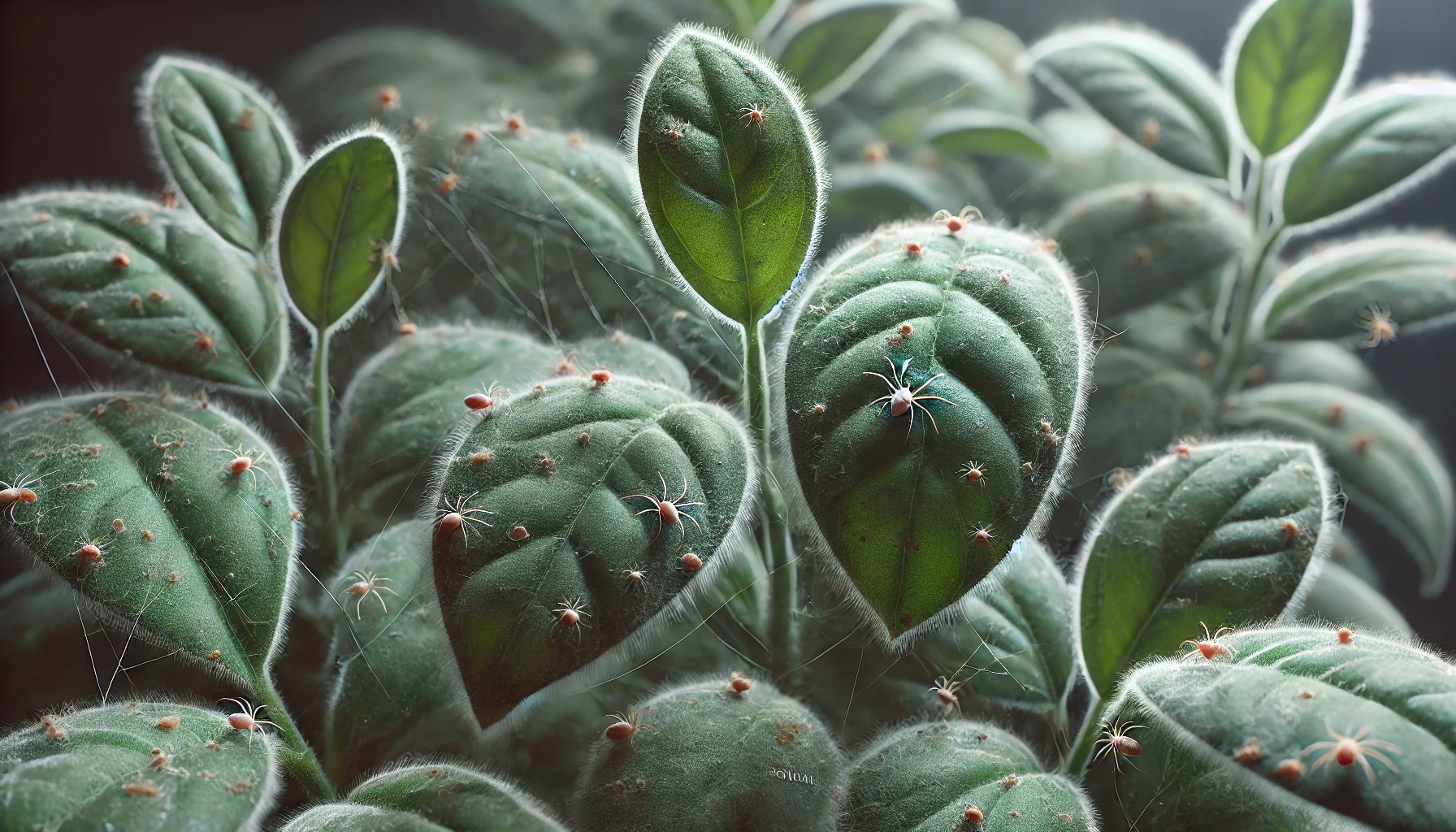
How to Identify Spider Mites on Plants?
Early detection is crucial when dealing with spider mites. Since they are difficult to spot with the naked eye, their presence is often detected through the damage they cause rather than by seeing the mites themselves. Discoloration and Leaf Damage Spider mites puncture plant cells to extract sap, leaving behind tiny white, yellow, or bronze speckles on leaves. As feeding continues, the affected leaves turn yellow, dry out, and eventually fall off. Fine Webbing on Leaves and Stems A telltale sign of a severe infestation is the thin, silky webbing on the underside of leaves and plant stems. This webbing protects the mites from predators and can make plants look dusty or covered in cobwebs.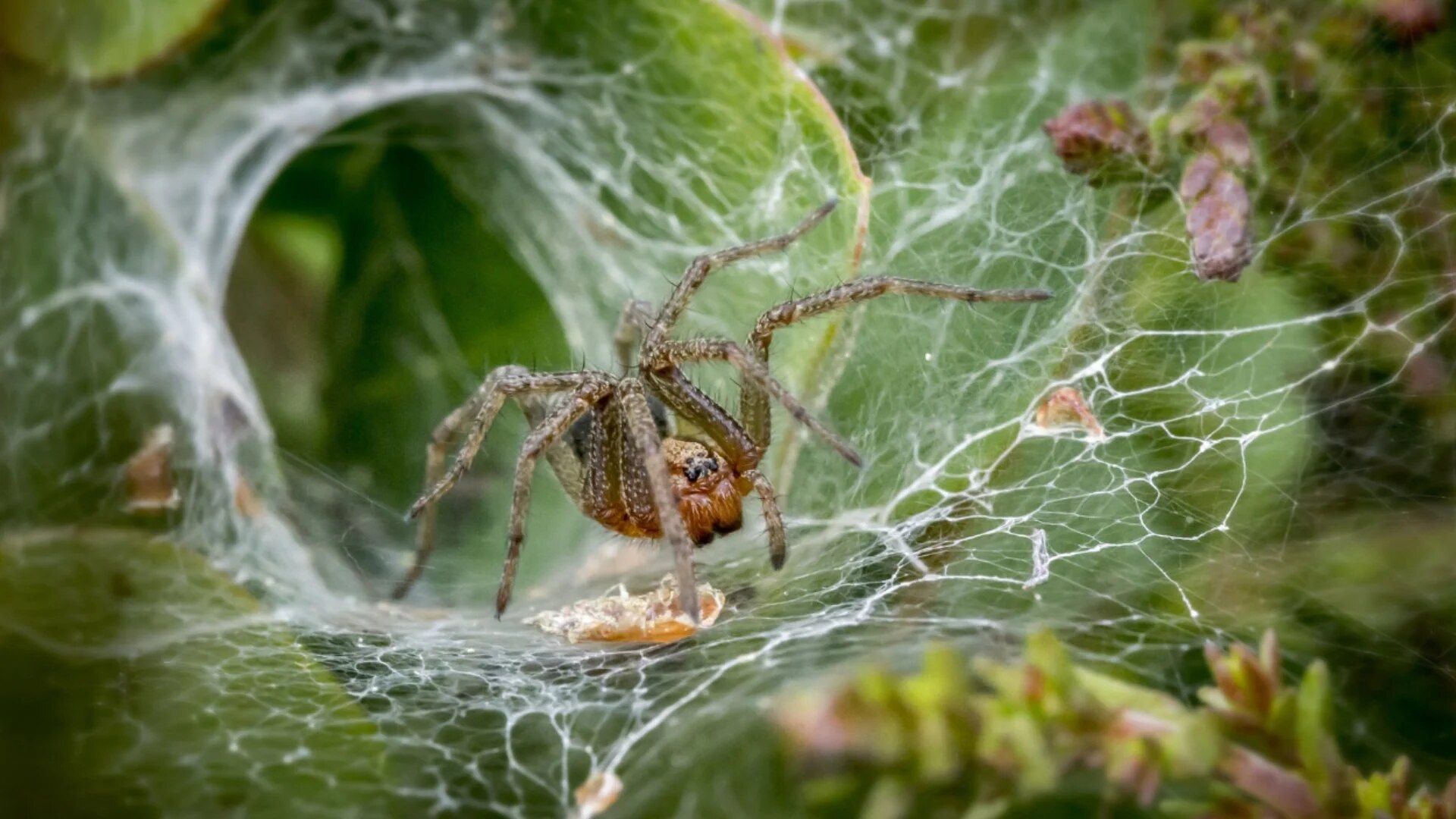 Stunted Growth and Wilting
Heavily infested plants struggle to grow because spider mites continuously drain nutrients. If left untreated, plants may become weak, wilted, or completely defoliated.
Spotting the Mites Themselves
While spider mites are hard to see, you can use a white sheet of paper test: Hold a piece of white paper under a suspected plant and tap the leaves. If tiny moving specks appear on the paper, it’s likely a spider mite infestation.
Stunted Growth and Wilting
Heavily infested plants struggle to grow because spider mites continuously drain nutrients. If left untreated, plants may become weak, wilted, or completely defoliated.
Spotting the Mites Themselves
While spider mites are hard to see, you can use a white sheet of paper test: Hold a piece of white paper under a suspected plant and tap the leaves. If tiny moving specks appear on the paper, it’s likely a spider mite infestation.
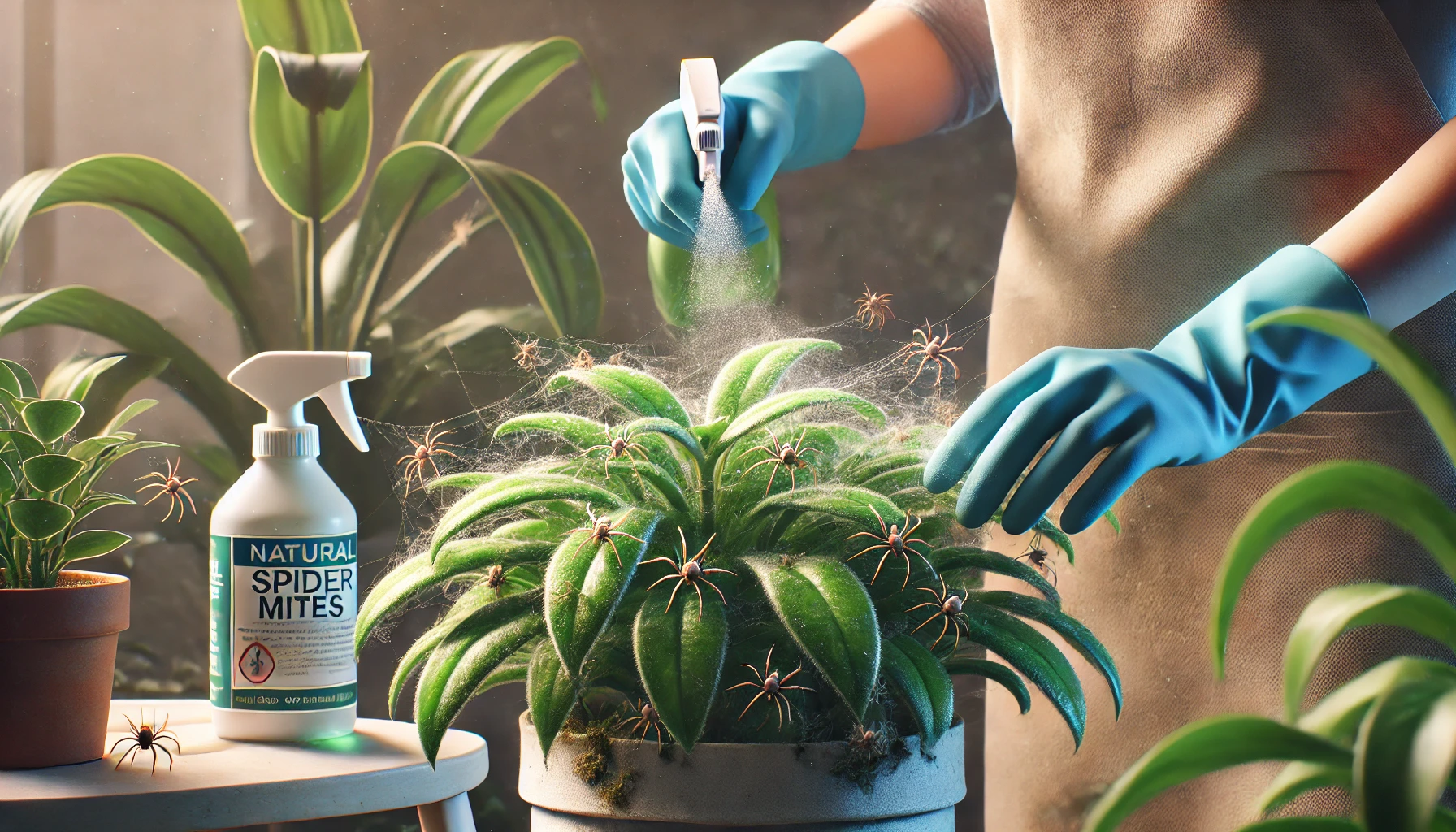
How to Get Rid of Spider Mites
-
Rinse the Plant with Water: Use a strong water spray to wash off mites and webs, especially from the undersides of leaves. Repeat regularly for best results.
-
Use Natural Predators: Introduce beneficial insects like ladybugs, lacewings, or predatory mites to naturally control mite populations.
-
Apply Insecticidal Soap or Neem Oil: Thoroughly coat leaves with soap or neem oil every 5–7 days to disrupt feeding and reproduction cycles.
-
Consider Chemical Pesticides: If natural methods fail, apply miticides specifically labeled for spider mites, avoiding broad-spectrum insecticides.
-
Remove Heavily Infested Plants: Dispose of plants with severe infestations to prevent spread to healthy ones.
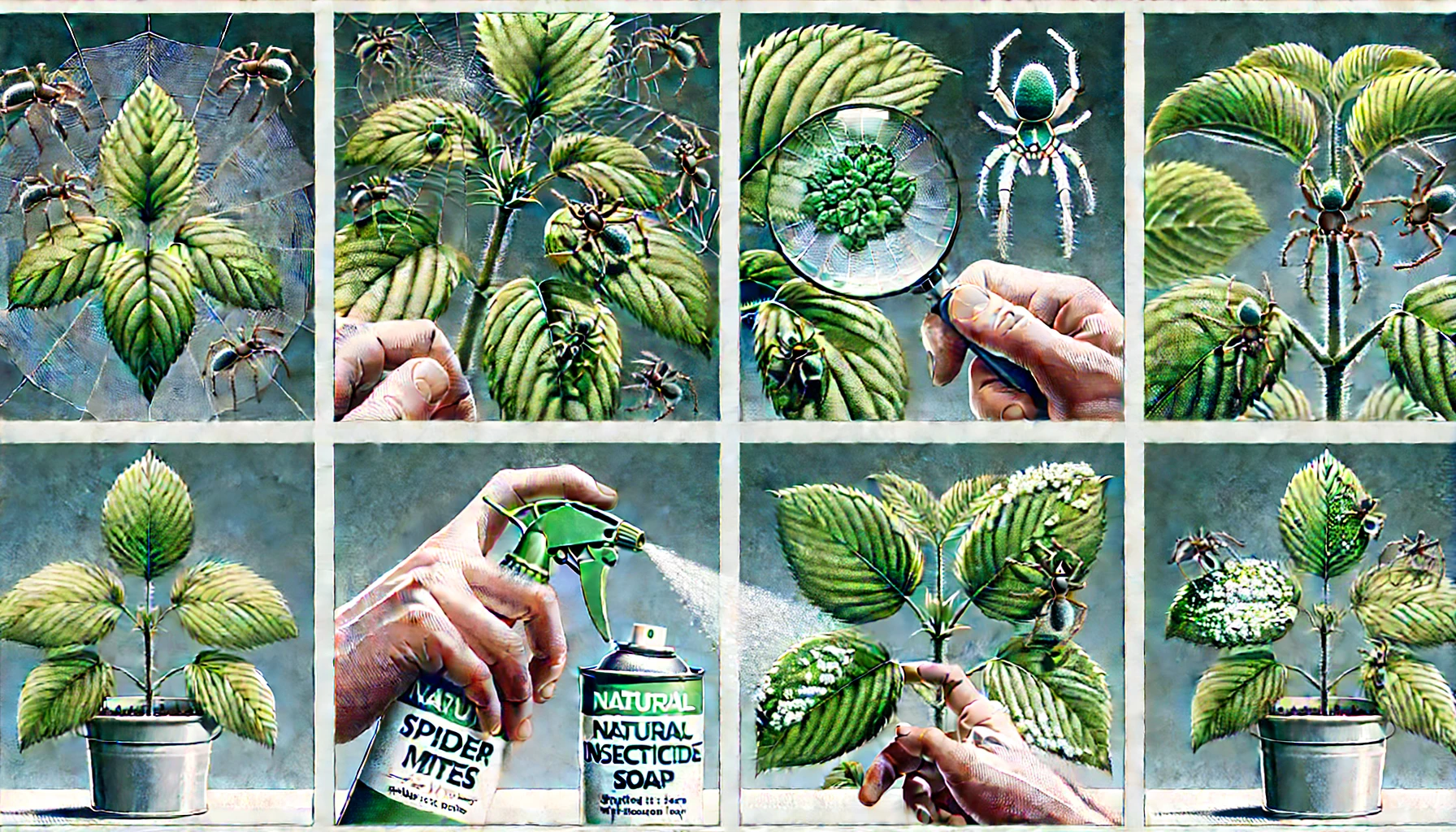
How to Treat Spider Mites
-
Prune Infested Plant Parts: Cut off and dispose of heavily infested leaves or branches to stop the spread of mites.
-
Use Strong Water Sprays: Blast leaves with water, focusing on the undersides, to dislodge mites. Repeat regularly for control.
-
Apply Insecticidal Soap: Use soap sprays to destroy mites’ exoskeletons. Apply thoroughly and follow the label instructions.
-
Use Miticides for Severe Infestations: If natural options fail, apply spider mite-specific miticides carefully to protect beneficial insects.
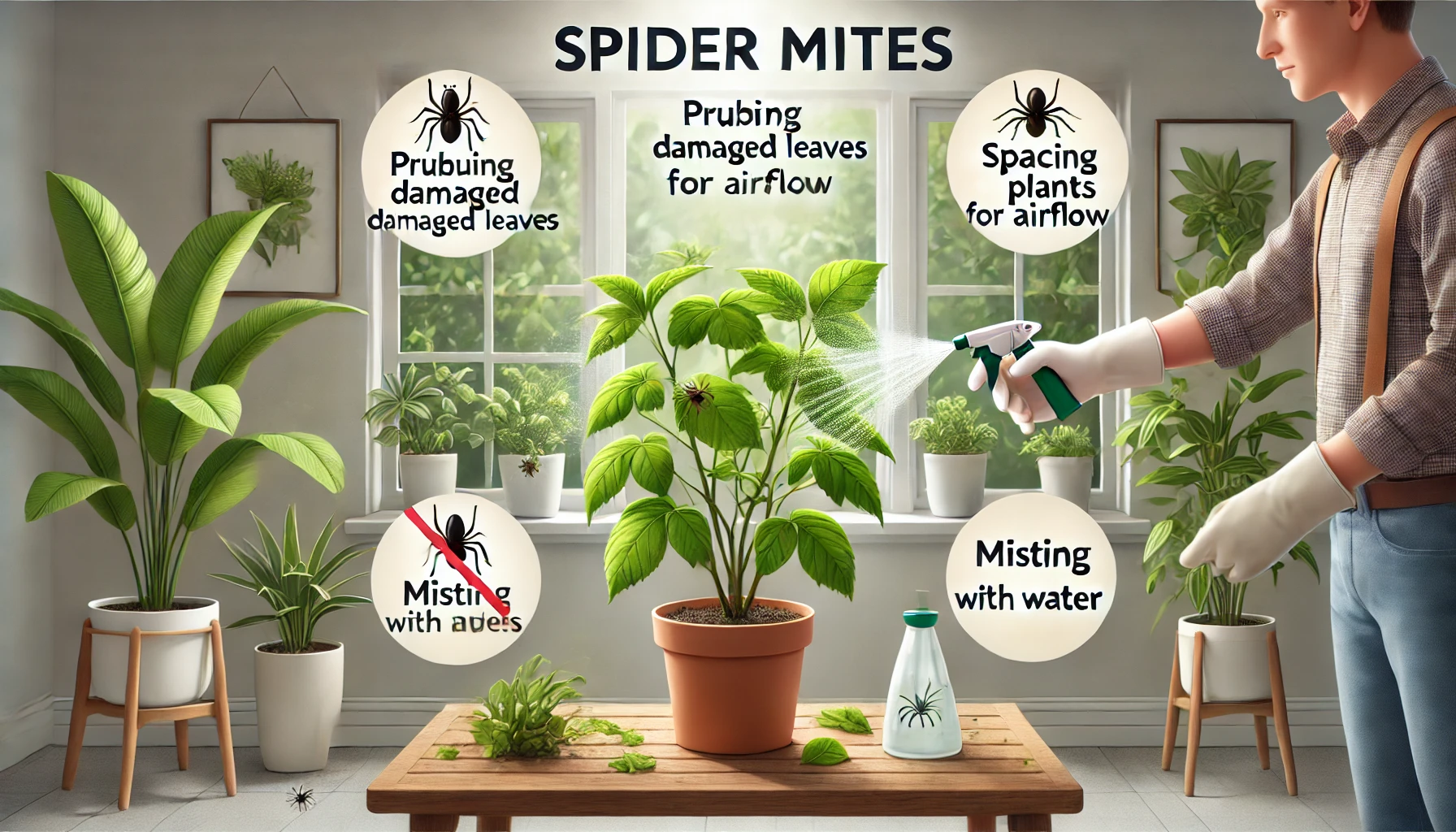
How to Prevent Spider Mite Infestations
Preventing spider mites is far easier than dealing with a full-blown infestation. By creating an unfavorable environment for mites, you can lower plant damage. Regularly Inspect Your Plants Check your plants frequently, especially during warm weather. Look under leaves and along stems for early signs of damage or webbing. The quicker you catch an infestation, the easier it is to control. Increase Humidity Levels Spider mites prefer dry conditions, so keeping humidity levels high can help deter them. Regular misting, using a humidifier, or grouping plants together can increase moisture levels, making the environment less hospitable for mites.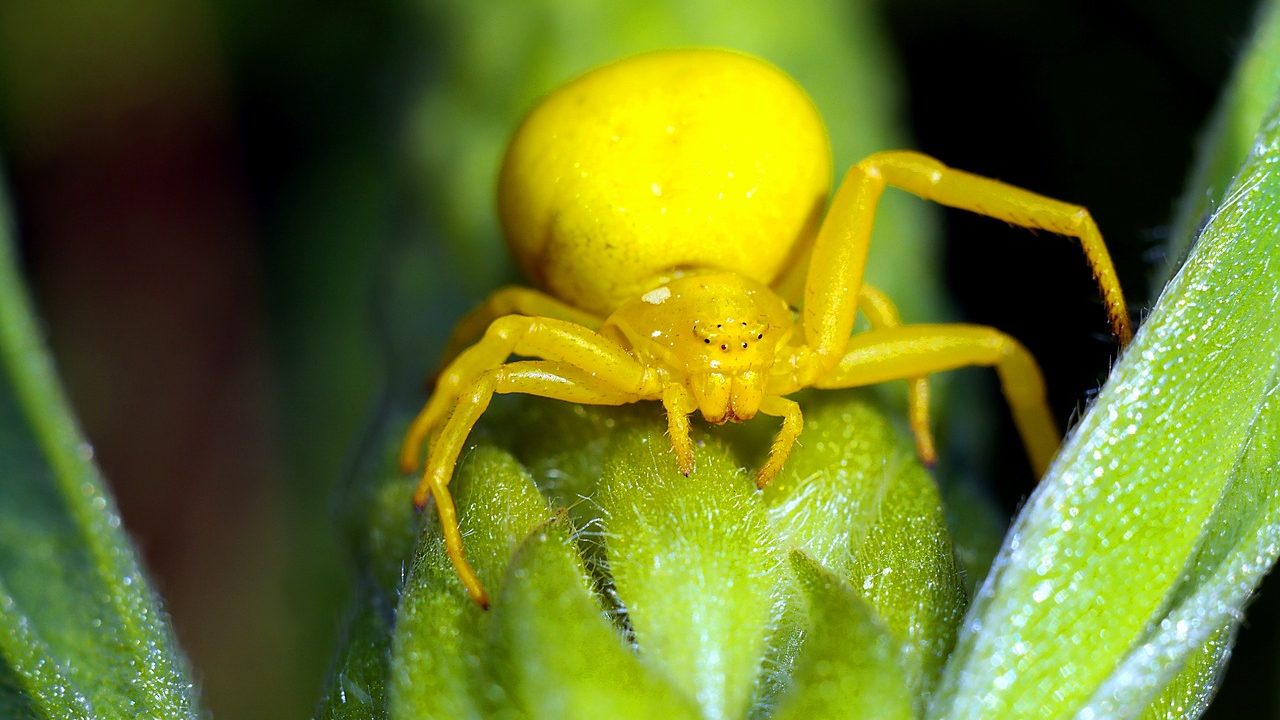 Keep Plants Healthy and Stress-Free
Healthy plants are less prone to pest infestations. Ensure your plants receive adequate water, nutrients, and proper air circulation to boost their natural defenses. Avoid over-fertilizing, as excessive nitrogen can encourage mites.
Quarantine New Plants
Before introducing new plants into your home or garden, inspect them for pests. Isolating new additions for a couple of weeks can prevent unknowingly spreading spider mites to healthy plants.
Clear Away Dead Plant Material
Spider mites can hide in plant debris, so regularly pruning, trimming, and removing dead leaves reduces their hiding spots. Keeping your garden clean minimizes the risk of recurring infestations.
Keep Plants Healthy and Stress-Free
Healthy plants are less prone to pest infestations. Ensure your plants receive adequate water, nutrients, and proper air circulation to boost their natural defenses. Avoid over-fertilizing, as excessive nitrogen can encourage mites.
Quarantine New Plants
Before introducing new plants into your home or garden, inspect them for pests. Isolating new additions for a couple of weeks can prevent unknowingly spreading spider mites to healthy plants.
Clear Away Dead Plant Material
Spider mites can hide in plant debris, so regularly pruning, trimming, and removing dead leaves reduces their hiding spots. Keeping your garden clean minimizes the risk of recurring infestations.
| Myth | Fact |
|---|---|
| Spider mites are insects. | Spider mites are not insects; rather, they are arachnids, related to both spiders and ticks. |
| Spider mites are only a problem in summer. | Spider mites can be a problem year-round, particularly in dry conditions. |
| You can’t see spider mites without a magnifying glass. | Spider mites are tiny, but their damage and webbing can sometimes be seen without magnification. |
| Water alone will not help with spider mites. | A strong water spray can effectively dislodge spider mites from plants. |
| All spider mite treatments are the same. | Treatments vary, and it’s important to choose one based on the severity of the infestation and plant type. |





